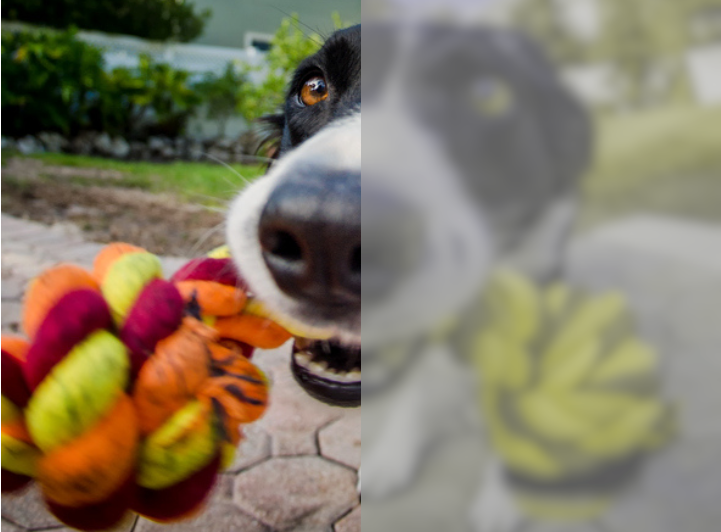
Have you ever wondered if your furry friend experiences the world in a rainbow of colors like we do? While dogs certainly perceive their surroundings differently than humans, recent research suggests they possess some color vision capabilities. This article delves into the fascinating world of dog color perception, exploring how they see colors and whether they might even have favorite hues.
This exploration will cover the science behind dog vision, examining their ability to distinguish between colors and the factors influencing their color perception. We’ll also delve into studies suggesting potential preferences for certain colors in dogs, particularly blues and yellows.
Dog Color Vision
Dogs, like humans, rely on specialized cells called cones in their retinas to perceive color. However, unlike humans who have three types of cones (red, green, and blue), dogs possess only two types. This dichromatic vision limits their ability to distinguish between colors in the same way we do.
The absence of a red-sensitive cone means dogs struggle to differentiate between reds, greens, and oranges, perceiving them as shades of yellow or gray. Their world is essentially a muted palette compared to our vibrant spectrum. Despite this limitation, dogs can still perceive blues and yellows quite clearly, allowing them to distinguish these hues from each other and from shades of gray.
Can Dogs See Colors?
While dogs don’t experience the full range of colors humans see, they are not completely colorblind. Their dichromatic vision allows them to differentiate between certain colors, particularly blues and yellows. This means they can perceive a world with some color, albeit in a less vibrant way than we do.
Think of it like watching a movie through tinted glasses – the colors are still present but altered, creating a different visual experience. Similarly, dogs see a world with muted colors, where blues and yellows stand out prominently. This doesn’t mean they lack the ability to appreciate beauty or recognize objects based on color; rather, their perception is simply different from ours.
Dog Color Perception
The way dogs perceive color is influenced by various factors beyond their limited cone types. Lighting conditions play a crucial role, as brighter light enhances their ability to distinguish between colors. Similarly, contrast between objects and their surroundings can also aid in color recognition.
Interestingly, some studies suggest that dogs may develop stronger color preferences based on their experiences. For example, if a dog consistently associates a particular color with positive experiences like playtime or treats, they might show a preference for that hue. This highlights the interplay between genetics, environment, and individual learning in shaping dog color perception.
Favorite Colors in Dogs
While there’s no definitive answer to whether dogs have favorite colors, some research indicates they might exhibit preferences for certain hues. These preferences are often linked to positive associations or experiences.
For instance, studies have shown that dogs may be more responsive to toys and objects in brighter shades of blue or yellow. This could be due to the fact that these colors stand out more prominently against a backdrop of muted tones in their visual world. Additionally, if a dog has been trained with rewards associated with specific colors, they might develop a preference for those hues.
Blue and Yellow Hues
Blue and yellow are often cited as the colors dogs perceive most vividly. This could be because these wavelengths fall within the range of their dichromatic vision, allowing them to distinguish them more readily than other colors.
Furthermore, blue is often associated with calm and tranquility, while yellow represents happiness and playfulness – emotions that dogs readily express. These positive associations might contribute to their apparent preference for these hues.
Conclusion
While dogs don’t experience the world in the same colorful way humans do, they possess a unique form of color vision that allows them to perceive blues and yellows with clarity. Although definitive answers about do dogs have a favorite color remain elusive, research suggests they might exhibit preferences based on experiences and associations. Ultimately, understanding dog color perception sheds light on their fascinating sensory world and highlights the diverse ways in which different species interact with their environment.
